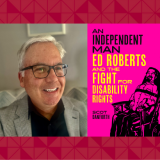Student Reflection on the Emerging Scholars Conference II
October 8, 2012
Most recently, my participation in the Emerging Scholars Conference has been on my mind. The topic of bullying has moved front-and-center with the news of a 14 year-old Santa Ana student who was shot by police officers a few days ago (9/28/12). It turns out they found a suicide note. One must wonder what was so terrible in his young life that would make death appear like the best option. Were there signs? According to some of the comments, there were none.
“It’s tragic. He was only 14 years old.”
Rodriguez, a freshman at Segerstrom High School, was a good student with good attendance, said Deidra Powell, a Santa Ana Unified School District spokeswoman.
“He was respectful, well-liked, and most recently a wide receiver on the freshman football team,” Powell said. “We don’t know of any unusual behavior. He was a good kid.”
So I question our ability to truly connect with children if we do not speak to their social-emotional well being in our schools. I don’t mean the occasional empathetic teacher who is gifted at student/teacher relationships. I am talking about a systematic way to teach that has students practicing skills of conflict resolution, character mastery, and change agent ideology. In this way students connect to a larger purpose as they develop altruistic identities.
True school reform must strive toward integrated curriculum that tends to the whole human being. It demonstrates the purpose of learning by connecting to a much larger goal of improving the quality of life for all humanity. Along with academic content, this curriculum has students using their skills and virtues for the better good. Oliner and Oliner (1995) insist that the development of a caring society must penetrate all major social institutions. Schools are a key part of this process.
- If we want to teach our children altruism, we must reconstruct our school curriculum so that our children learn not only reading, writing, math, science, and computers, but also the consequences of indifference to our fellow humans.
- First, we must recognize that we cannot build bonds among people by intellect alone—that is, through thought and contemplation. Our religious and other institutions must appeal not only to the intellect but to our emotions and to group norms. Compassion and empathy, as several studies have shown, are most effectively taught through stories.
- Second, we must build bonds through the experience of caring, not only among members of our own community but also with people outside our community. Our institutions must do more than talk about caring; they must also model it, giving, receiving, and expecting caring from all participants. School staff, faculty, and administrators, family members, priests, ministers, rabbis, and mullahs must forgo empty platitudes and model caring behavior on a daily basis.
- Moral behavior is the consequence of empathy, caring for others, a strong attachment to the moral community, and an ethical obligation to all life. Reaching out to others at considerable personal risk, as Balwina Piecuch did, and as many, many others have done, has been the force behind much that is good in the world. It has saved innumerable lives and inspired new acts of generosity and heroism.
It is the role of the educator to do more than teach academic skills. A truly inspired educator must erase the seams between the cognitive, social, emotional and spiritual development of the child. In this way we can ensure we will have a healthy community of ethical, empathetic leaders in the future. Perhaps we can offer a young 14-year old boy a better option.
By Marisol Rexach, Ph.D. in Education Student

